5. Just Back From: The Silk Road
In my first guest collab, my artist pal Philippa reveals where she went—and what she bought—in Central Asia
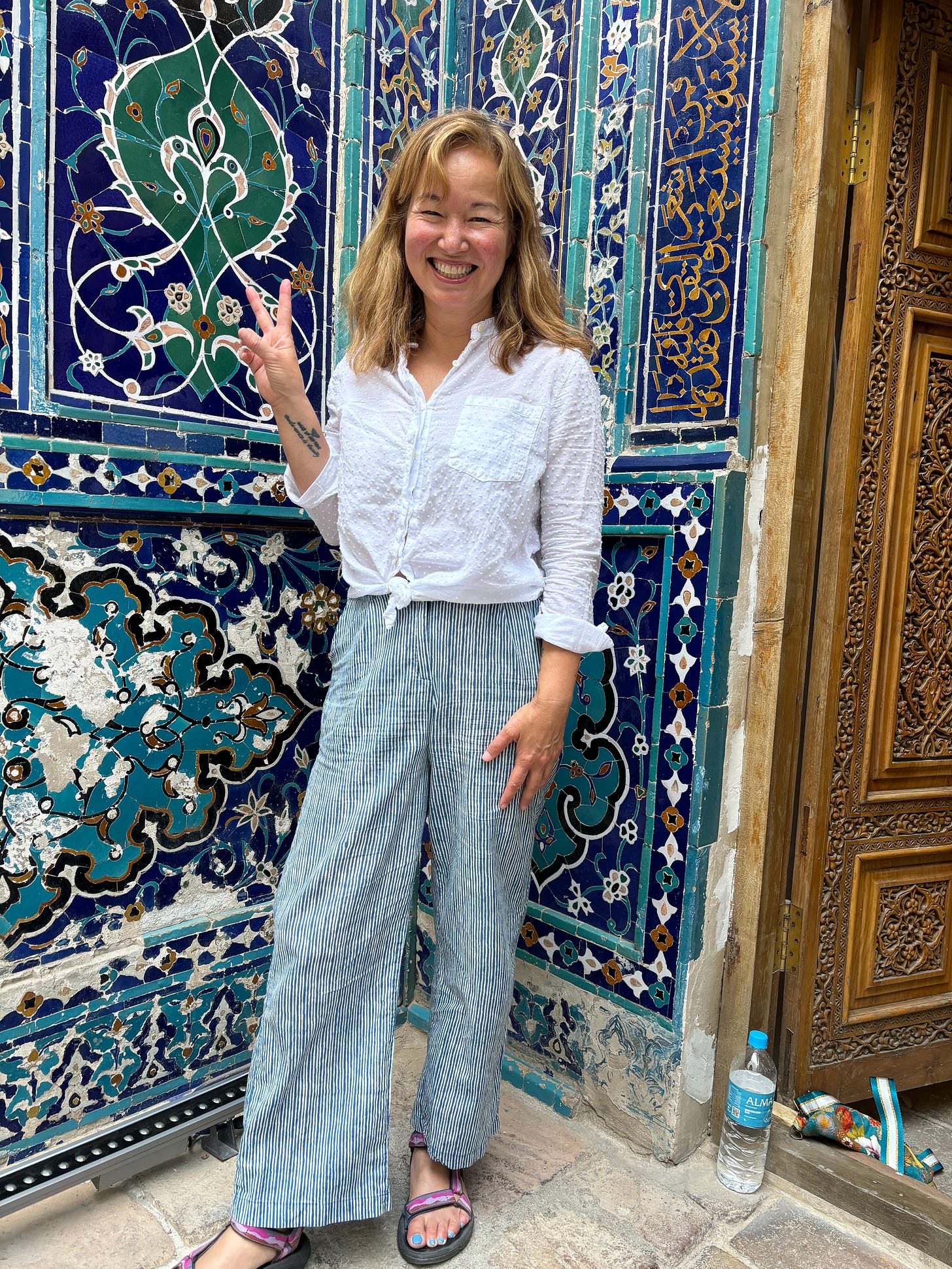
I started this Substack not only to share my own travels (and shopping adventures), but also to feature the journeys of cool people I know. So welcome to the first installment of “Just Back From,” in which I chat up my disarmingly cool friend Philippa Pham Hughes, a Washington, D.C.-based artist, curator, and cultural strategist who just returned from four weeks wandering along—and purchasing cool textiles on—the Central Asian portion of the Silk Road. (That’s the vast trading network which once stretched from China to Europe and North Africa.)
Here’s where she went and what she bought along the route. Read a detailed account of her trip here.
JB: What’s your full name, and how do we know each other?
PPH: Philippa Pham Hughes. We met when you worked as a fashion editor at the Washington Post, and you profiled me as the best-dressed person in Washington, D.C. And this somehow also involved traveling on a crazy trip to Paris with you and an entourage.
JB: Oh wow, that trip, I think it was around 2010? We did so much art museum hopping, shopping, and browsing at the Paris flea market.

JB: Let’s talk about the vacation you just took to Central Asia, aka the Silk Road. Where did you go?
PPH: My boyfriend Adam and I originally were just going to Mongolia. But when I told my Kazakh friend Togzhan we were traveling to Central Asia, she convinced me to also visit Kazakhstan and Uzbekistan. These are all big countries so it’s like telling someone who’s visiting the U.S. for the first time that they should also visit Mexico and Canada!
We started in Samarkand, Uzbekistan, where the Registan [a restored square with dazzling 14th-16th century madrassas] was so beautiful. It’s so much turquoise tile and a little bit Disney. You’re walking around these ancient places, but they’re actually ruins that have been recently renovated. It didn’t look that good 100 years ago.
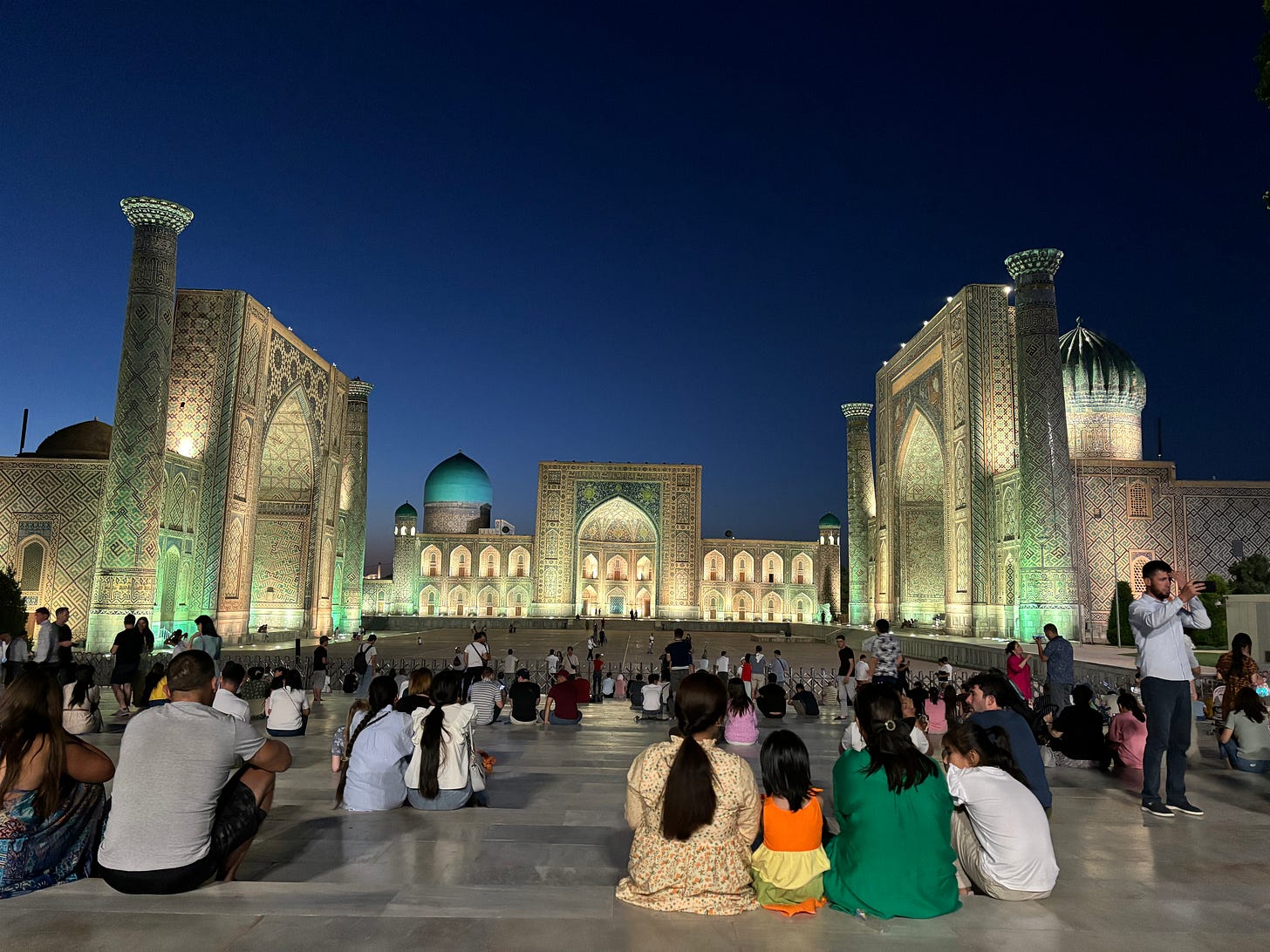
One of my students from a class I taught at Johns Hopkins in the spring was from Uzbekistan. He was spending the summer in Samarkand and he offered to show us around.
JB: Isn’t Uzbekistan a fabric powerhouse? What did you buy?
PPH: I am really interested in learning about the culture of the places I go, and you can do a little of that by seeing what kinds of goods they produce. Uzbekistan was a fun place to shop because it was the literal center of the Silk Road in ancient times. I ended up buying fabric, a really terrific silk coat, and a silk dress at Ikat by Asmira in Samarkand. (I got great tips on Uzbekistan shops and markets from blogger Eva Darling. And to buy Uzbek dresses, traditional suzani textiles, and bags online, try Anor Living.)

Oh, and I also got a plate in Uzbekistan, because I end up buying a different one nearly everywhere I go. Then I use them together at dinner parties.
I want people to know that I think creatively and differently and that I am bold. These wearable souvenirs signal those things.–Philippa Pham Hughes, artist and curator
JB: How do guests react to those “It’s a Small World” plates?
PPH: I’m sure those plates are much more meaningful to me than to anyone else! I also have several table cloths from different countries that I use. Many of the things I buy when I travel are for entertaining back home!
JB: Where did you go after Samarkand?
PPH: We went to Kazakhstan, where we stayed in Almaty and took a lot of day trips to hike. And we flew up to Astana, where there is all this futuristic, wacky architecture. And then it was on to our original trip to Mongolia.
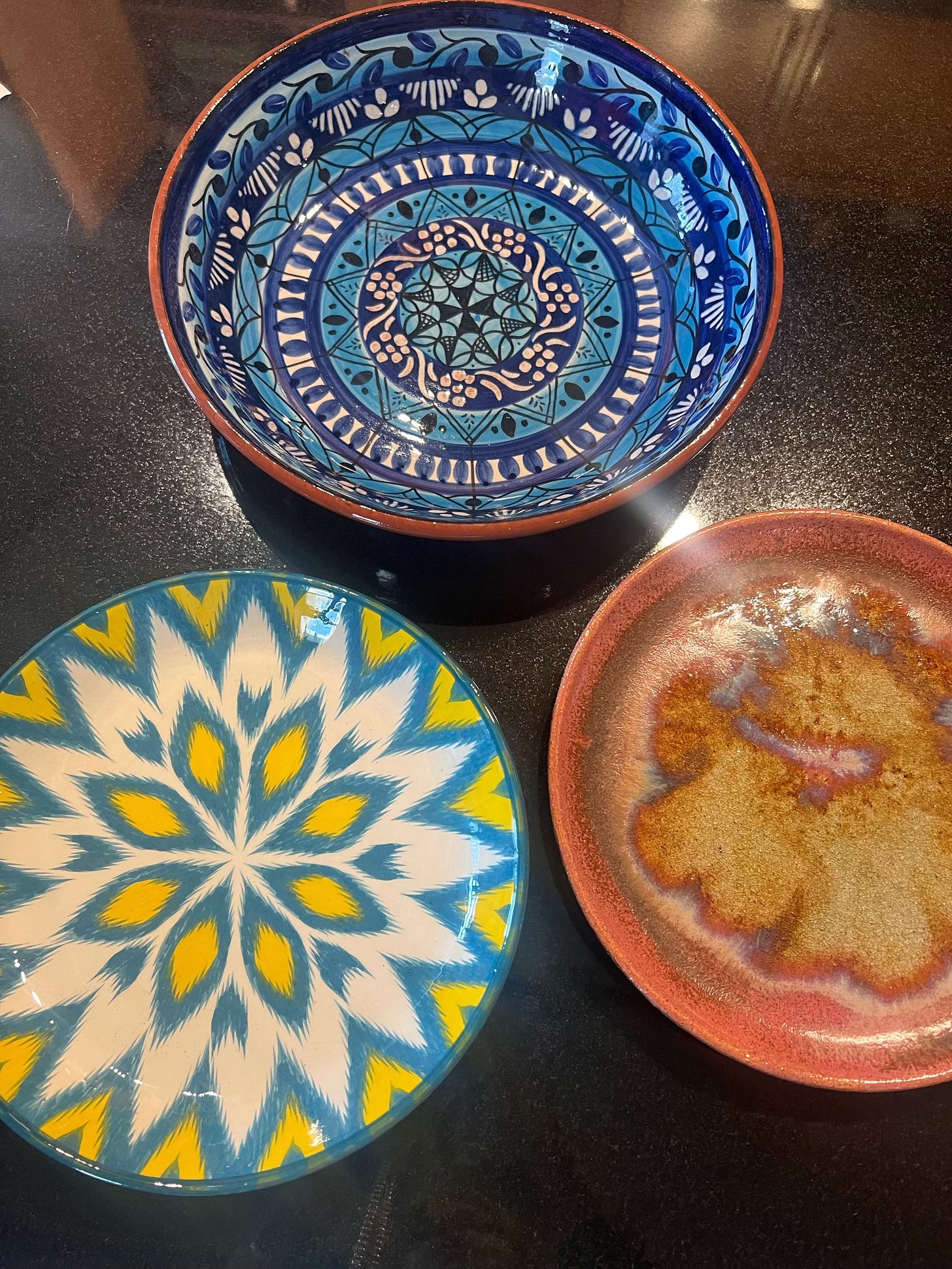
JB: What were some highlights of your time in Mongolia?
PPH: We stayed in a yurt for a couple nights in the Altai Mountains in western Mongolia, which is more closely aligned with Kazakh culture than Mongolian. Kazakh yurts were different from Mongolian ones, which we had stayed in earlier in the Gobi Desert. Kazakh yurts were decorated inside with lots of color including these intricate fabric wall hangings, which also act as another layer of insulation.
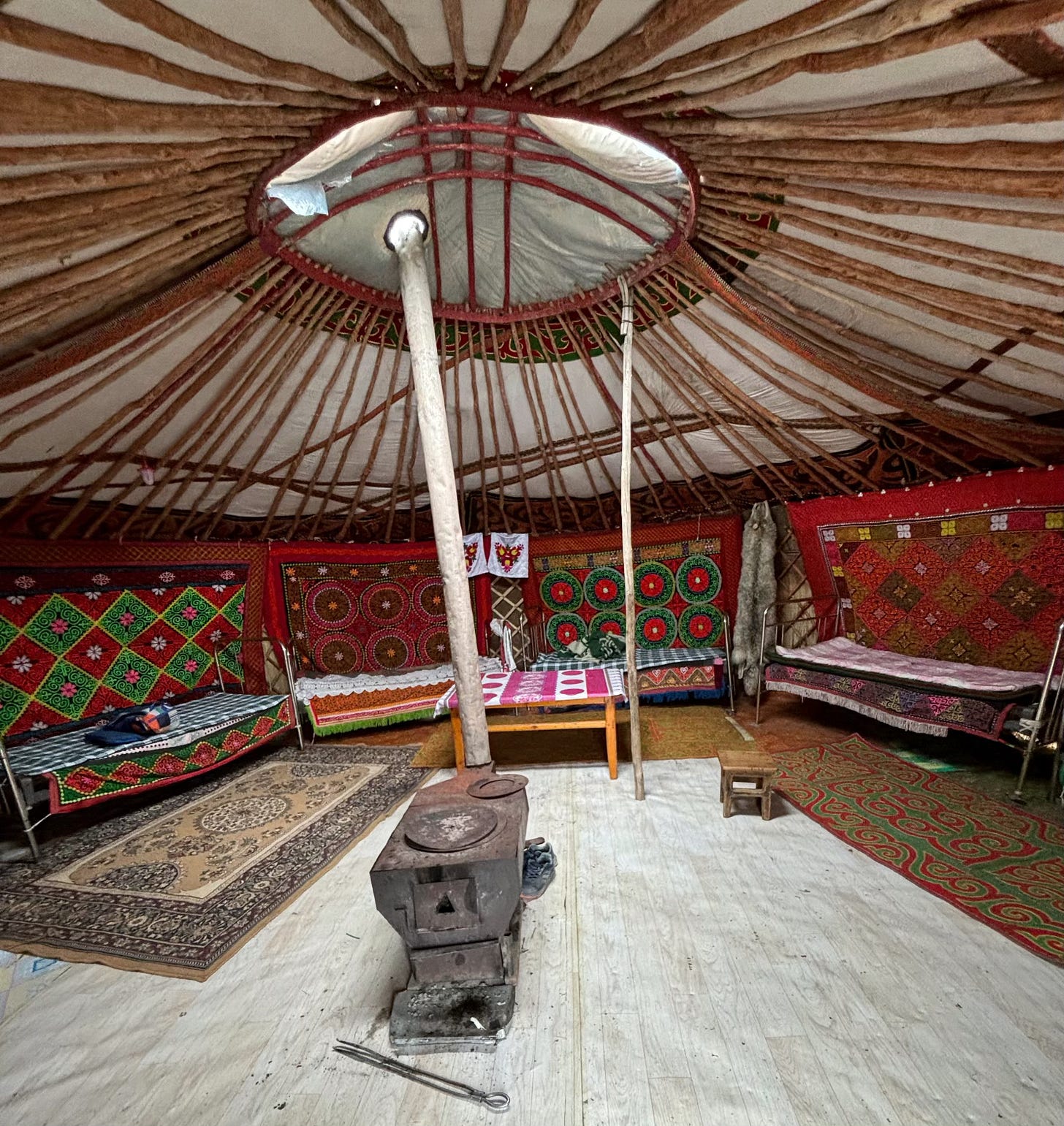
I fell in love with those yurt wall hangings. In Ulgii, the town that’s the main jumping off point for tourists in the region, I visited every souvenir shop until I found a vintage wall covering that had actually once hung in a yurt.
JB: What else did you do in Mongolia?
PPH: We also went to a Nadaam in Ulaanbaattar, the Mongolian capital. It’s a festival of manly competitions—wrestling, horseback riding, archery—that’s held every year in the summer. Everyone’s dressed up in traditional garb, and a lot of that kind of clothing was for sale at pop-up stalls around the stadium. I ended up with a silky embroidered vest and a jeweled belt.
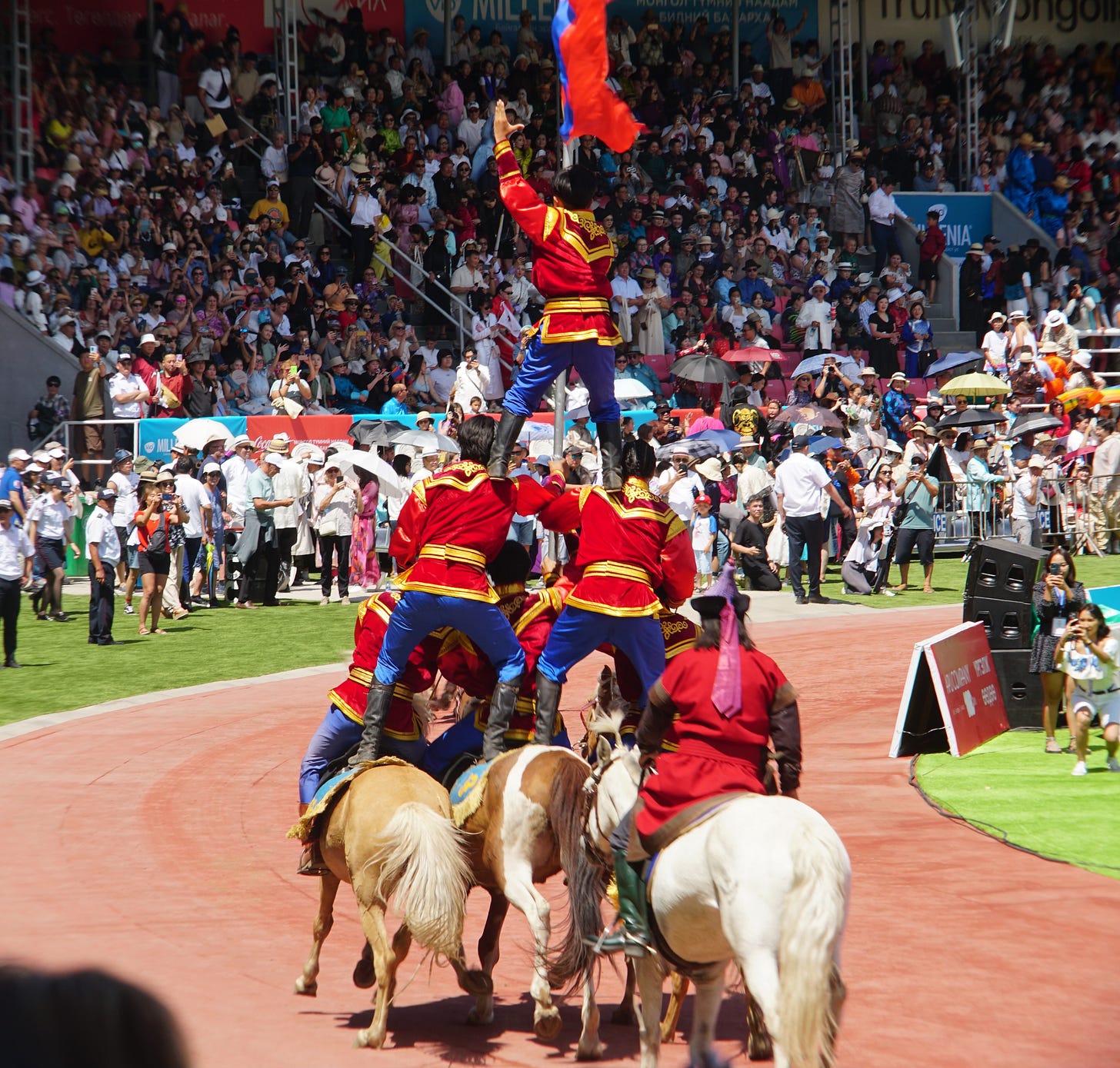
And there were also tons of cashmere stores in Mongolia—all those goats graze out in the Gobi. I went to the EVSEG Factory Store and found a terrific lime green cashmere hoodie and a beanie.
JB: You’re a huntress when you travel. Any tips on finding cool shops in far-flung places?
PPH: It’s a little easier now to find things beyond the souvenir shops because there are so many blogs and Substacks that share information. I scour the internet for hints.
But the best way to find places to shop (or eat or stay!) is to ask folks who live there. Last year when I went to India, I put the word out. Indian friends put me in touch with relatives who live in Mumbai who gave me specific shopping recommendations.
I also enjoy just wandering around and seeing what I can find. That’s how I discovered a dress shop in Almaty, Kazakstan called Heaven that sold brand name dresses from past seasons at deep discounts.
JB: What do you do with your treasures upon your return?
PPH: Sometimes they go in a box and I never see them again. I was rooting around in my storage room recently and found a stack of beautiful textiles that I’d bought in Israel in 2010. No idea what I was intending to do with them! Maybe I could have someone stitch them together to make a beautiful bed covering?
Years ago I bought 20 colorful two dollar scarves in Cambodia and gave them to friends. My mom, who is an aggressive shopper and haggler, said I should have paid only a dollar each. I don’t buy gifts for people as much anymore—I think they aren’t as meaningful to someone who hasn’t actually been there.

JB: You’re a fan of wearable souvenirs. How do you incorporate things like your Samarkand coat into Washington, D.C. life?
PPH: I work in the arts, so I feel like I can get away with wearing super colorful and unusual things—like the Samarkand coat—in the sea of black and navy blue typical of D.C. events. I want people to know that I think creatively and differently and that I am bold. These wearable souvenirs signal those things.
I also have a lot of dresses from Paris in my closet. They’re deceptive, because they give the illusion of being classic styles or fabrics. But they’ll always have an unexpected element like a Carlos-Carlos dress made from vintage men’s wool suit fabric and oxford shirt cloth in a very contemporary cut.
Did you (or someone cool you know) just travel somewhere fabulous and buy unusual things? PM me, and maybe you’ll be the focus of my next “Just Back From.”




